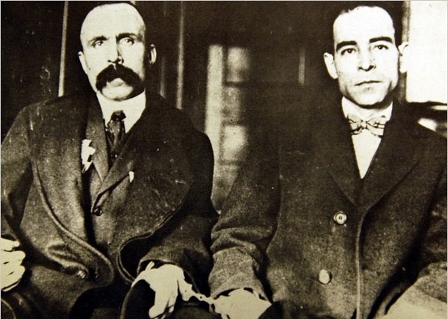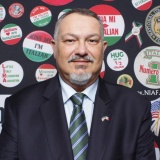
WTI Magazine #71 2015 October, 30
Author : Giovanni Verde Translation by: Giulia Carletti
The apparently common lives of the anarchists Ferdinando Sacco and Bartolomeo Vanzetti were thoroughly intertwined within a storyline, which became symbol of an unsuccessfully exposed injustice. In 1920s, Sacco and Vanzetti were arrested, tried, and executed in the United States, convicted of murdering a guard and a paymaster at Slater and Morrill Shoe Company. Back then, many doubts were raised upon their actual guilt, but not even the confession of the Portuguese prisoner Celestino Madeiros managed to absolve the two.
Sacco was born in Torremaggiore, province of Foggia, on the 22nd of April, 1891, into a family of farmers selling wine and olive oil. He then worked as a shoemaker in Milford, Massachusetts. Vanzetti was born in Villafalletto, province of Cuneo, on the 11th of June, 1888. He did many different jobs, as many as he could: he worked in a trattoria, in a quarry, in a steelworks, and also in a rope-making factory, at the Plymouth Cordage Company.
Sacco and Vanzetti led many political demonstrations defending the working class, and, in 1916, they also took part in an Italian-American anarchist group. At the beginning of the First World War, the group moved to Mexico, in order to evade military conscription. As anarchists, they could not even imagine dying for a State. The two men came back to Massachusetts at the end of the conflict, without knowing that US secret agents had been following them the whole time. Sacco and Vanzetti were arrested on March 1912 for possession of anarchist flyers and some weapons. A few days later, they would also be accused of a robbery during which the cashier of the company was killed.
According to many, the guilty verdict was mainly caused by the prejudices of police, district prosecutors, judges, and jury, as well as by the Minister of Justice Palmer's policy of terror. In fact, this was a period in the history of the United States which was characterized by the fear of Communism, the so-called "Red Scare" of 1917-1920. Neither Sacco nor Vanzetti considered themselves communists. Still, both men were designated by the local authorities as radical activists involved in strikes, political unrest, and propaganda against the war.
When the death sentence was made public, a demonstration was held in front of the government's palace in Boston. It lasted 10 days, until the date of the execution.
Also the fascist government, in spite of Mussolini's antithetical political ideology, sided with Sacco and Vanzetti. Accordingly, the Duce wrote a letter in which he asked the US ambassador to save the lives of the two condemned men.
However, it was all in vain. Sacco and Vanzetti were killed in the electric chair on the 23rd of August 1927, in Charlestown penitentiary in Dedham. Their execution caused popular unrests in London, Paris, and several cities of Germany. The bodies of the two anarchists were cremated and, today, their ashes are preserved in the cemetery of Torremaggiore, where Sacco was born.
On the 23rd of August 1977, as the 50th anniversary of the executions approached, the Governor of Massachusetts Michael Dukakis absolved the two men, stating: "I declare that any stigma and disgrace should be forever removed from the names of Nicola Sacco and Bartolomeo Vanzetti."
Before his death sentence, Bartolomeo Vanzetti would say these words to the court: "I would not wish to anyone what I have had to suffer for things that I am not guilty of. I am suffering because I am a radical and indeed I am a radical; I have suffered because I was an Italian, and indeed I am an Italian; I have suffered more for my family and for my beloved than for myself, but I am so convinced to be right that you can only kill me once but if you could execute me two times, and if I could be reborn two other times, I would live again to do what I have done already."



